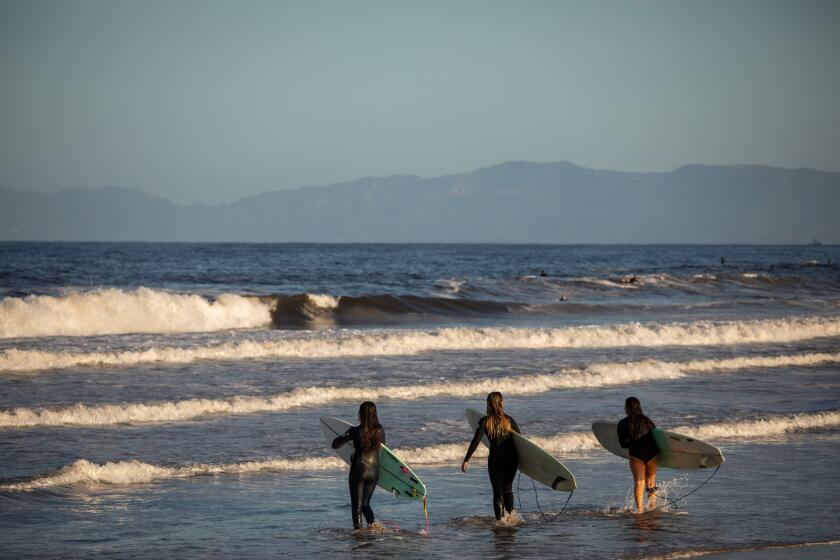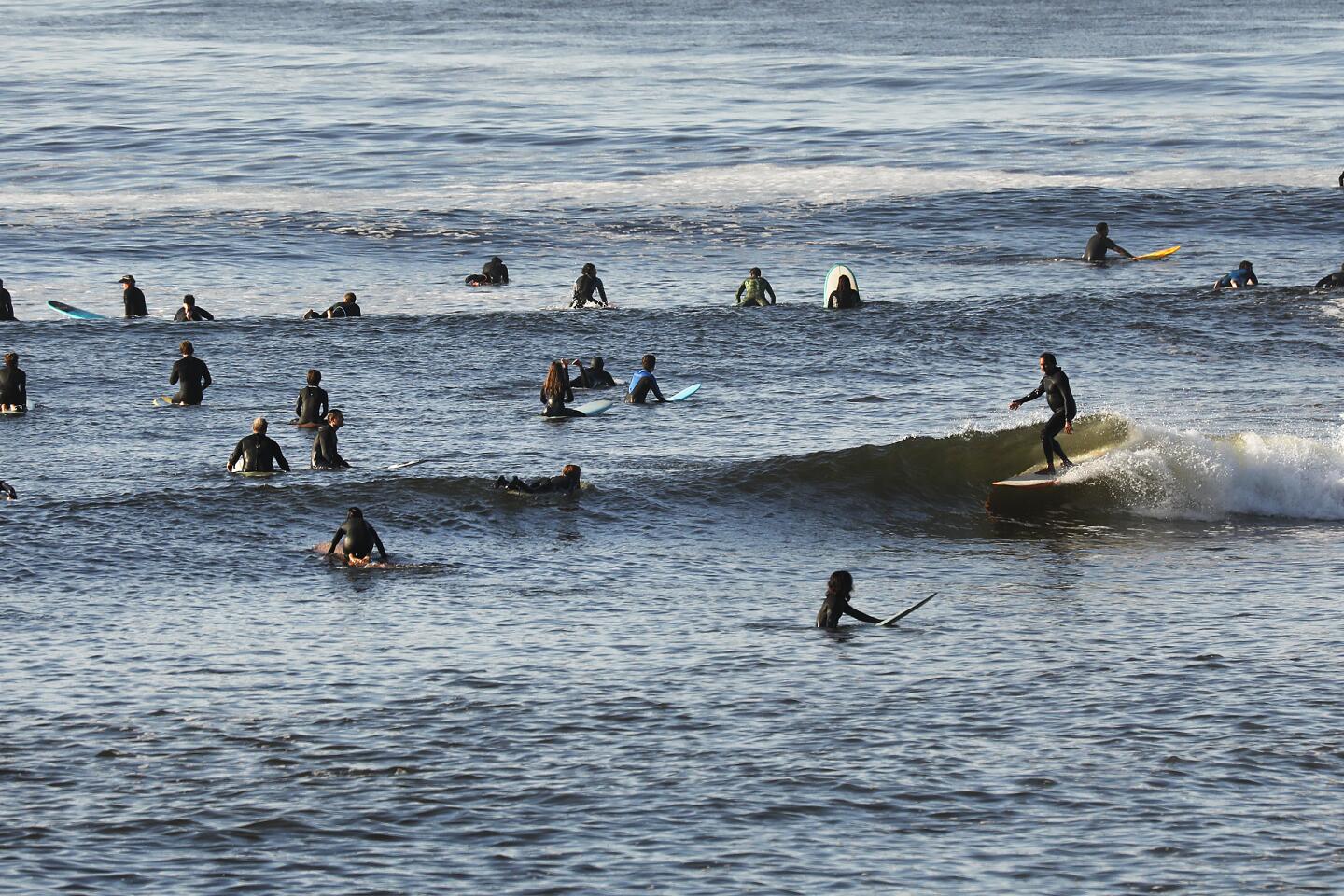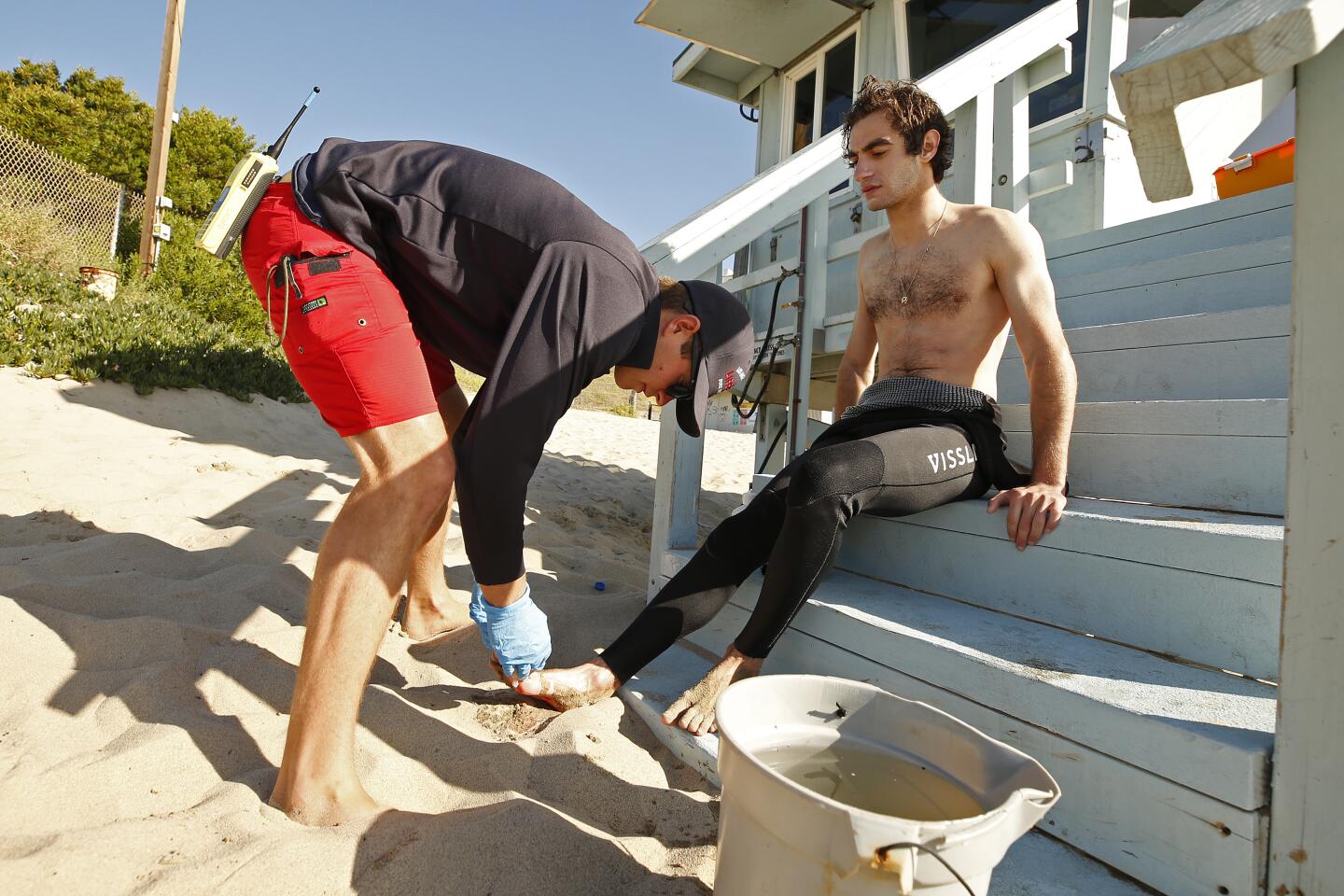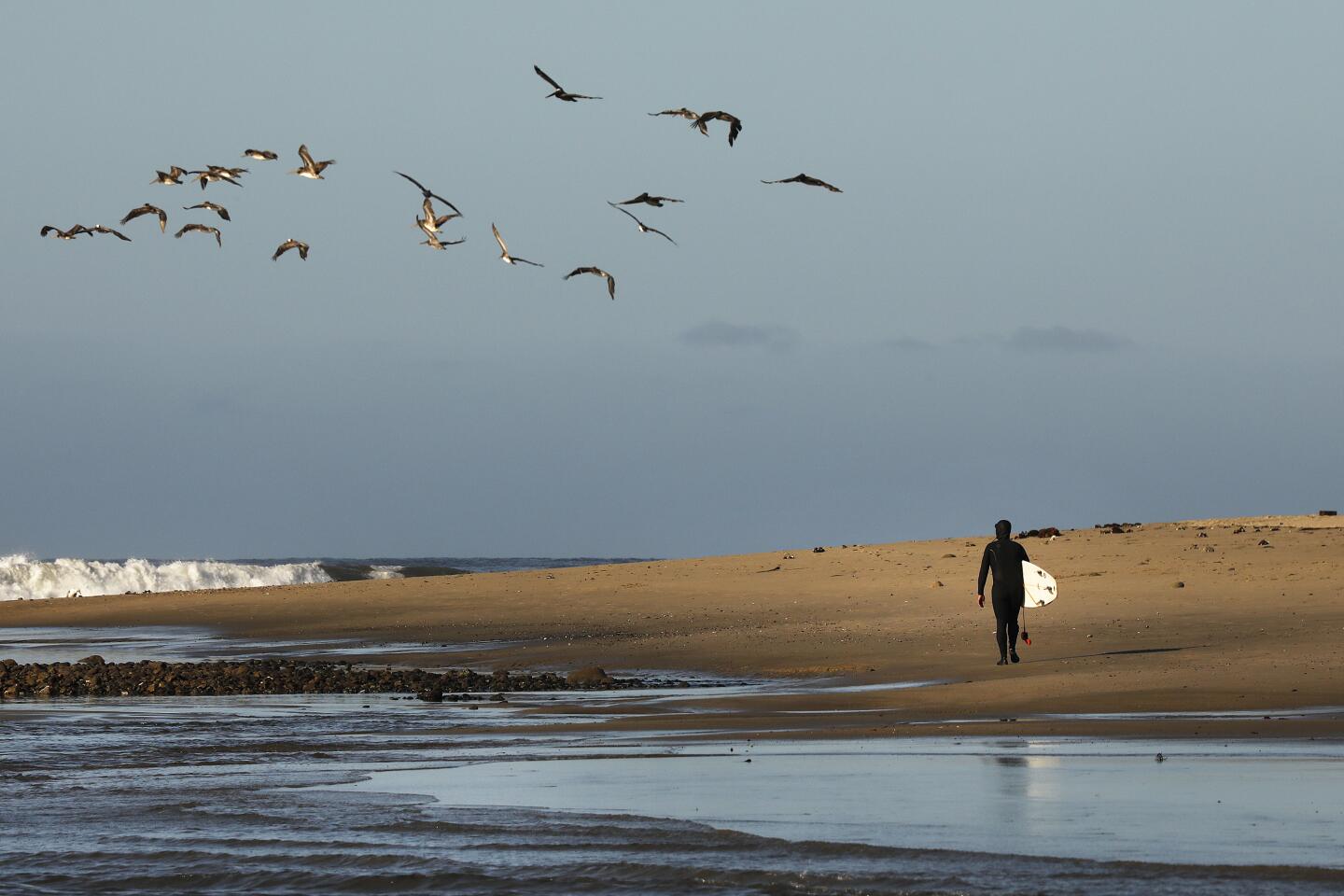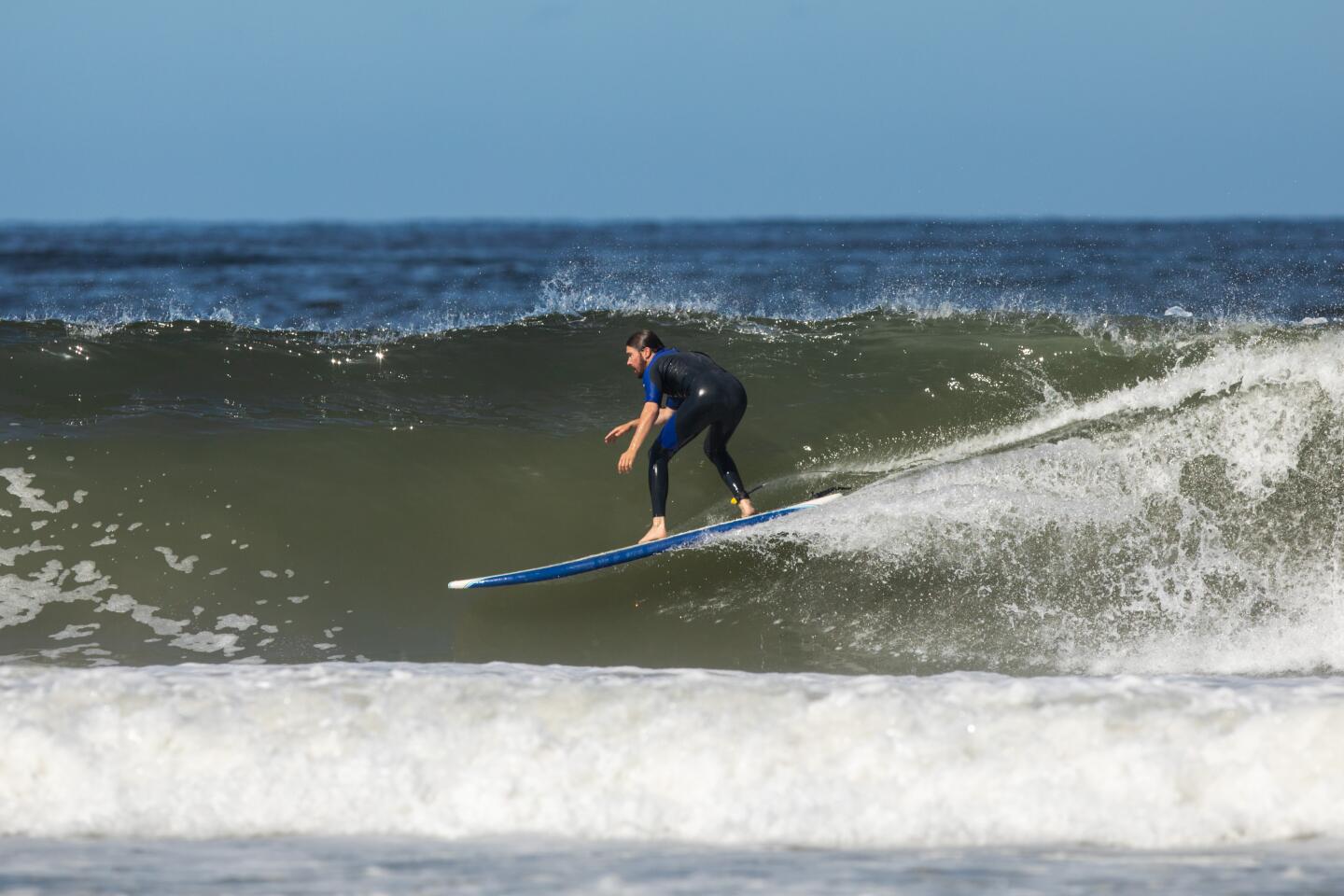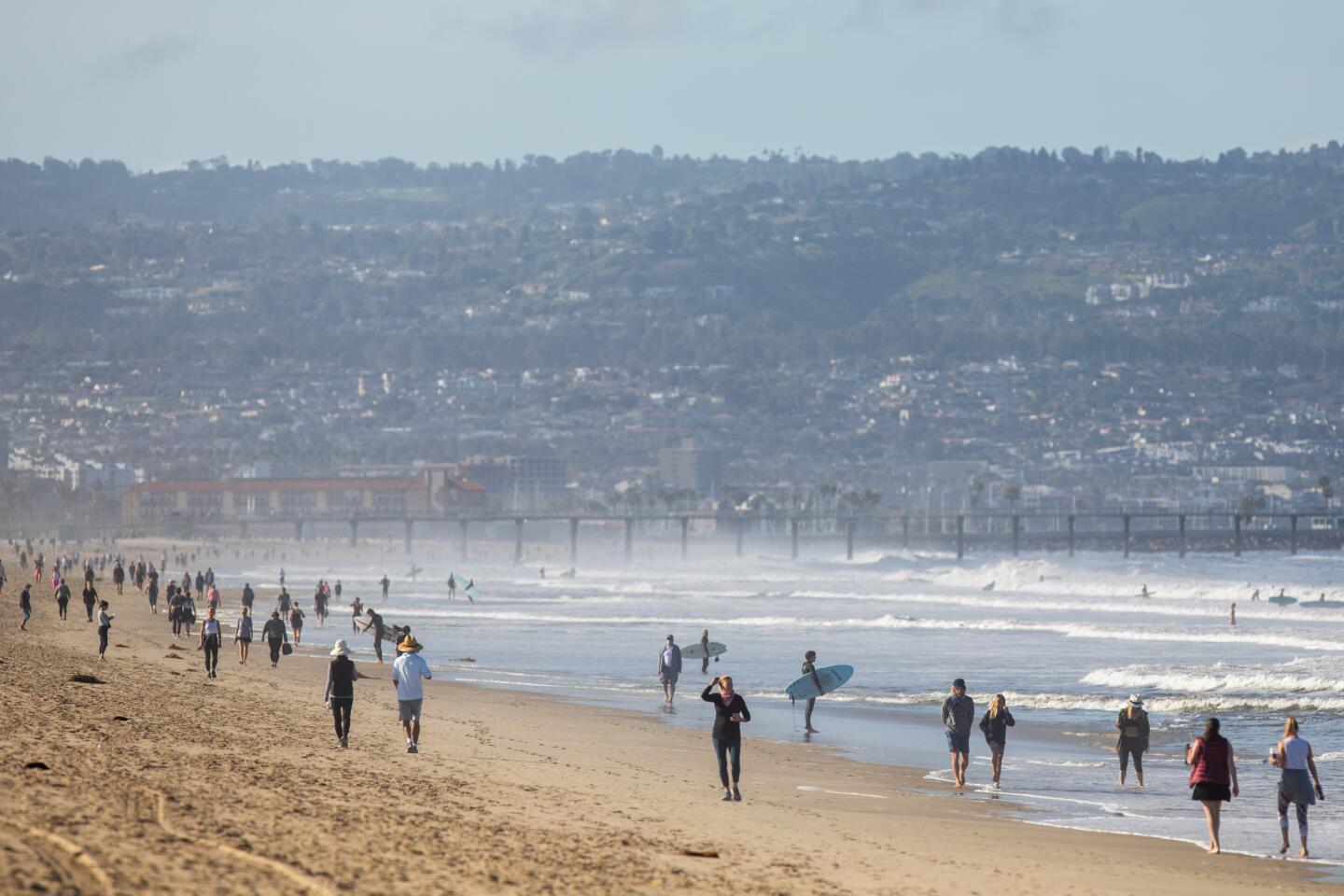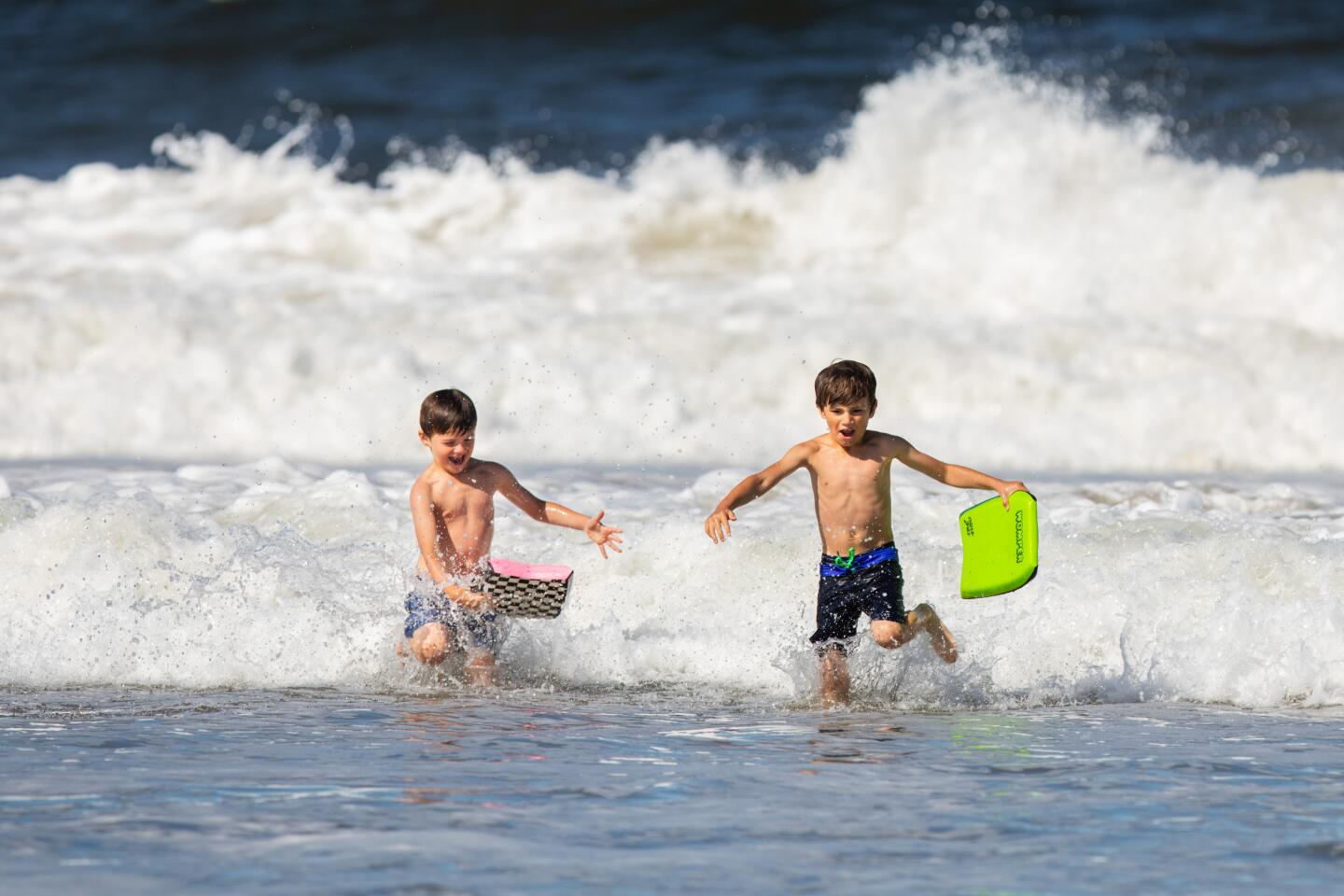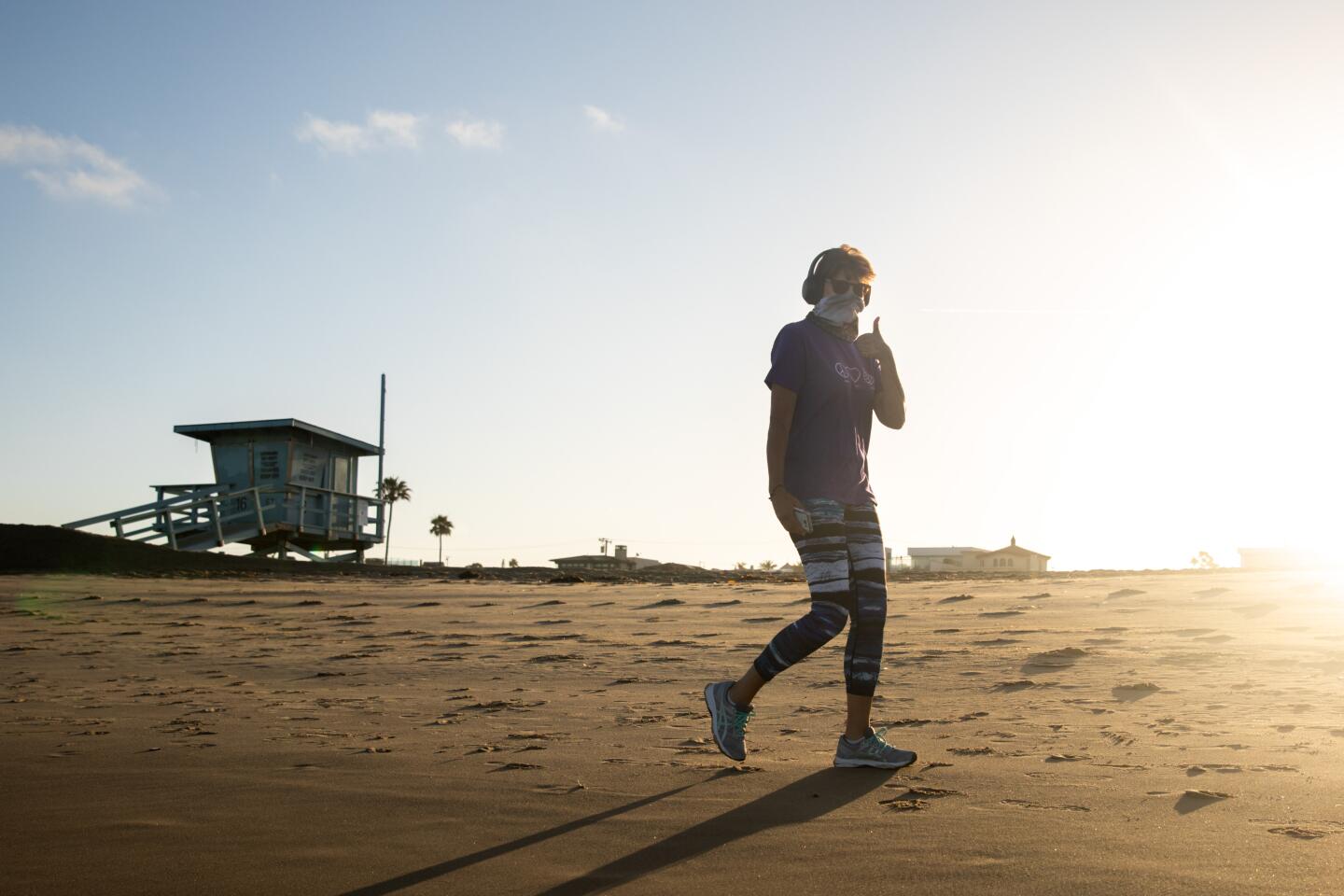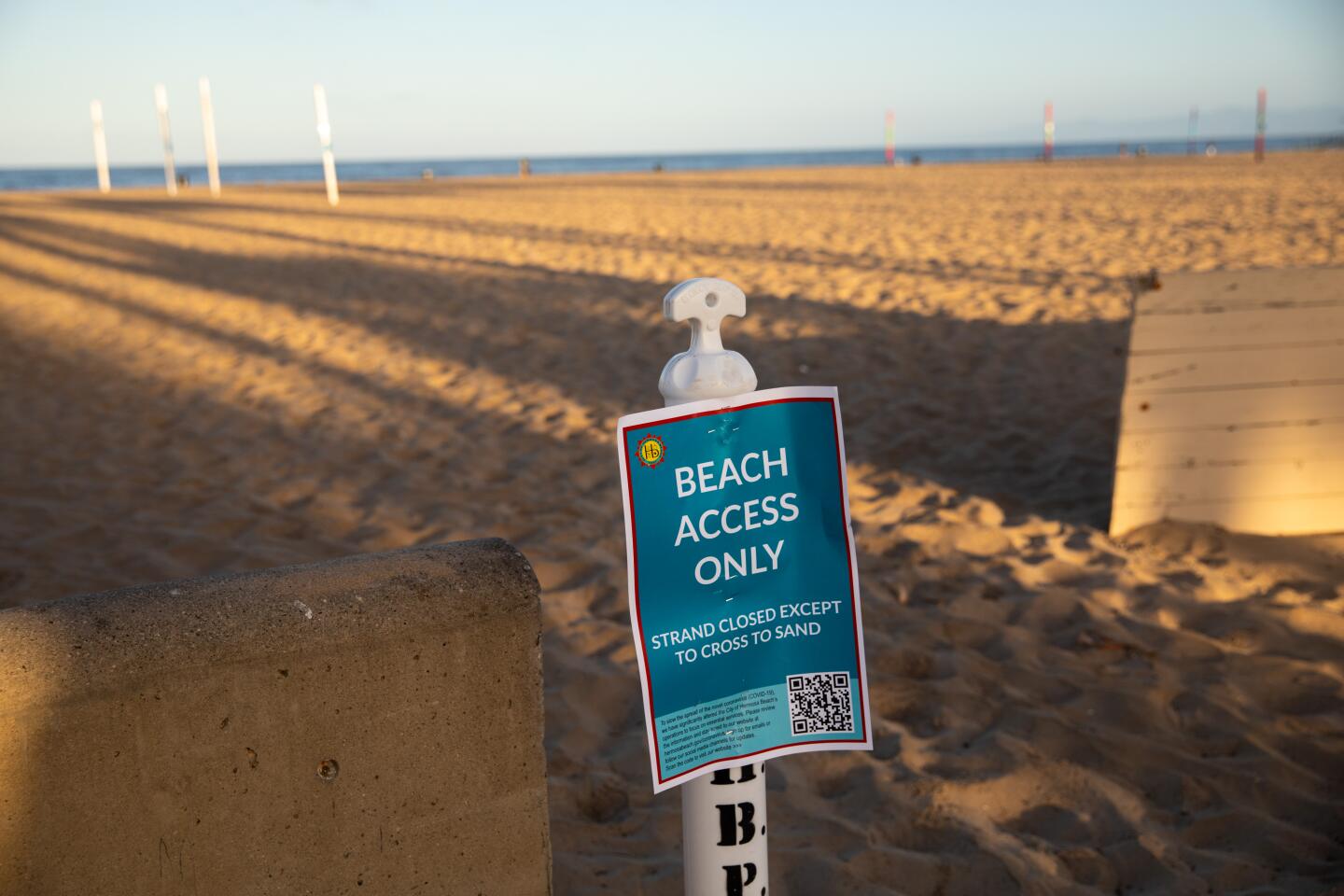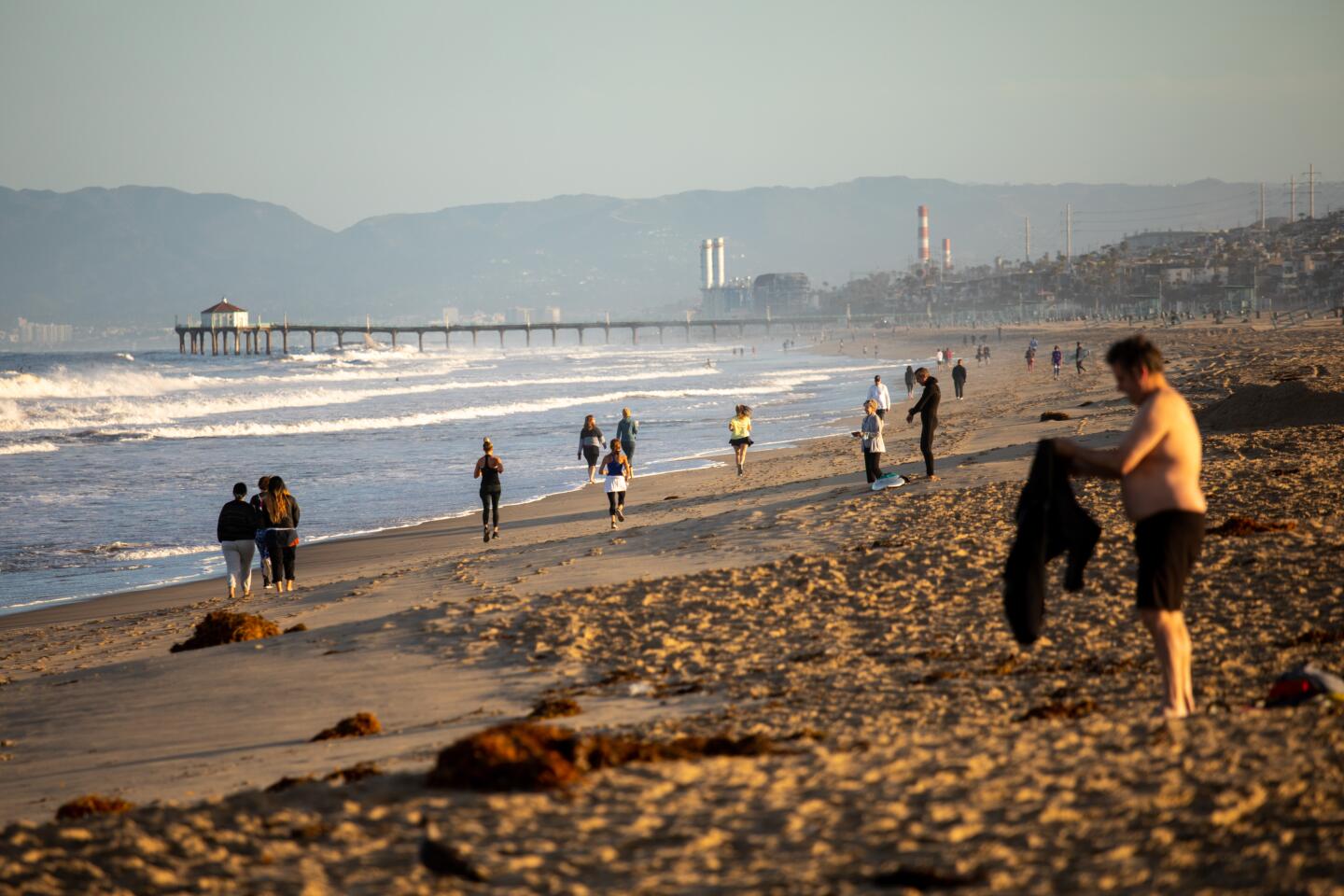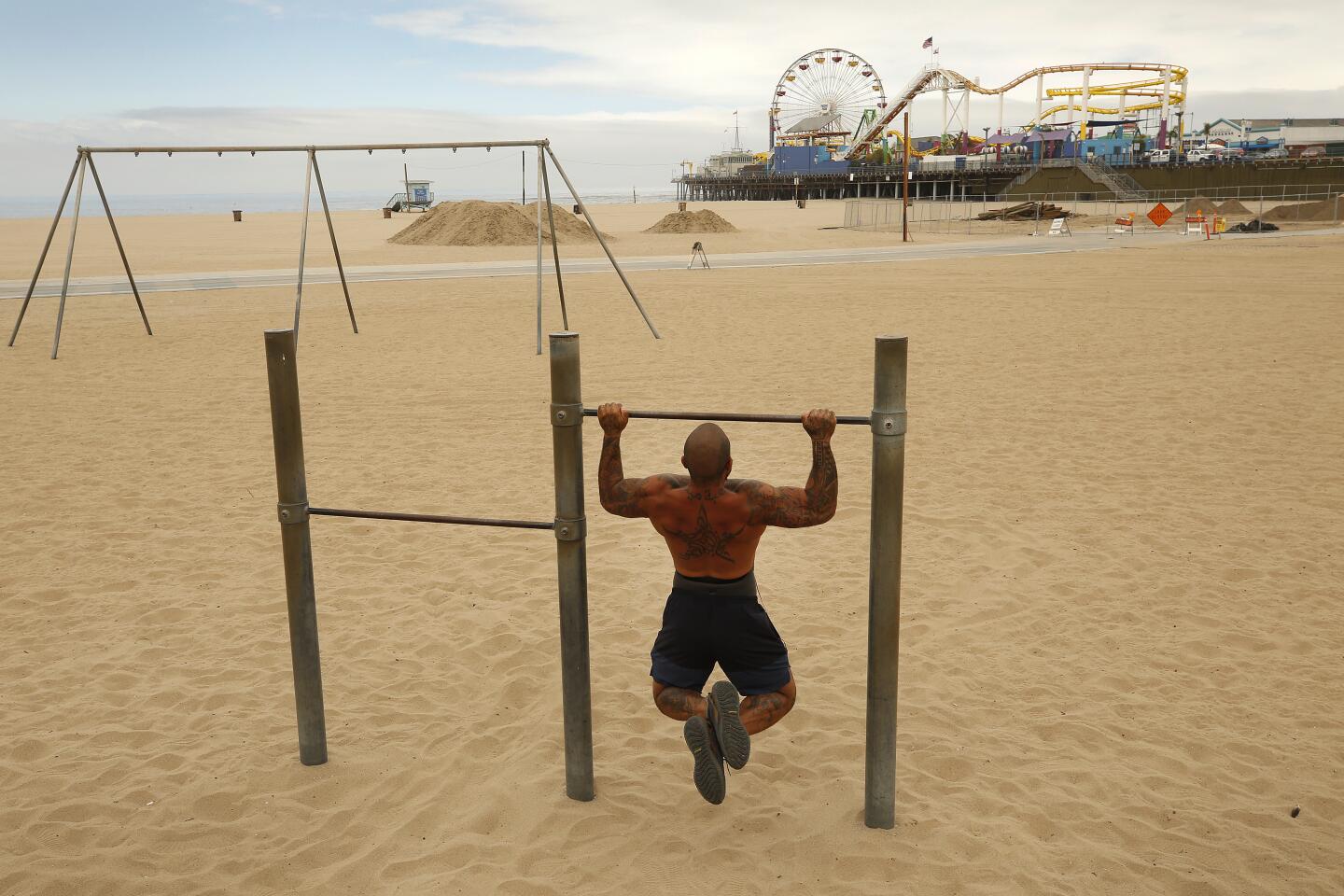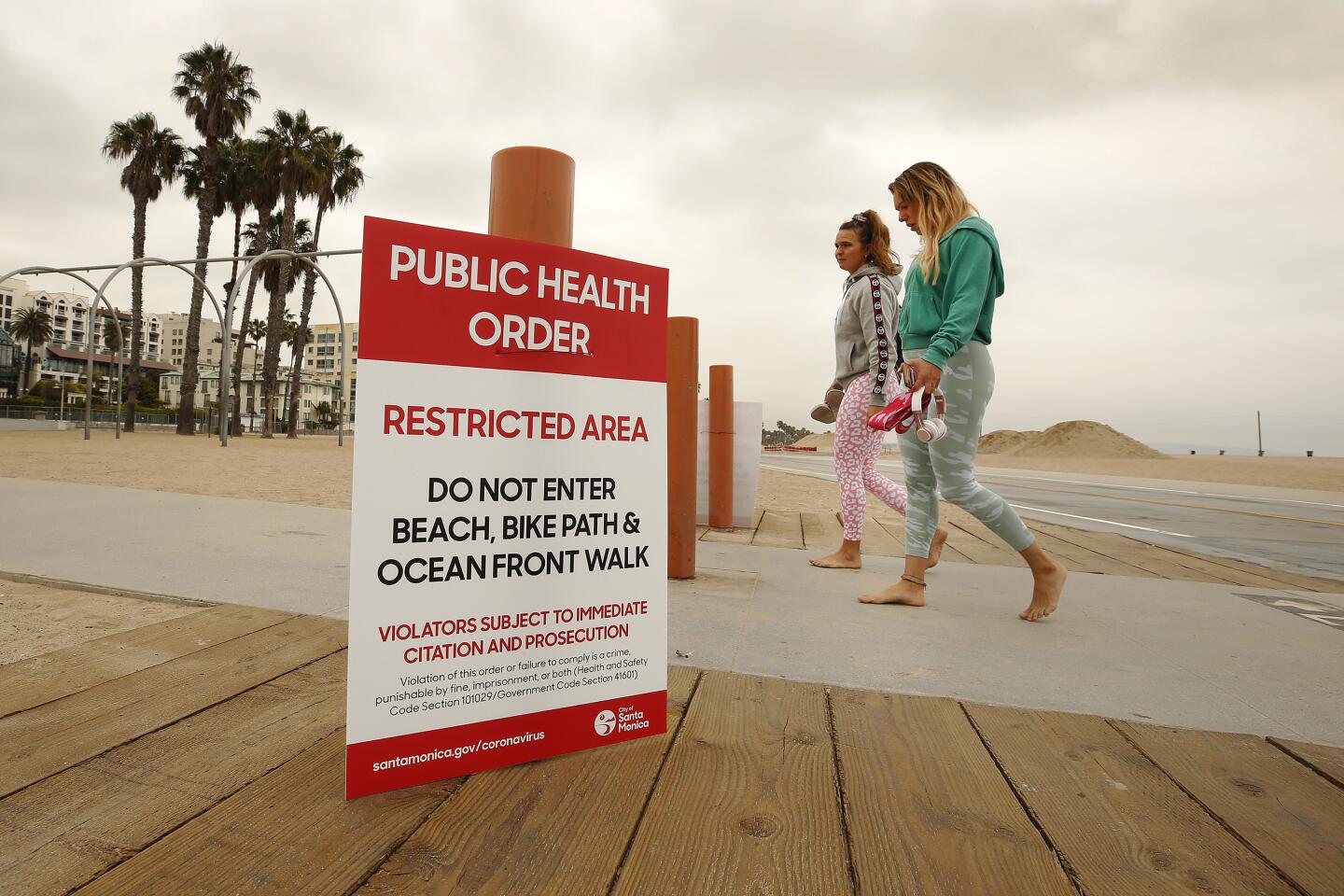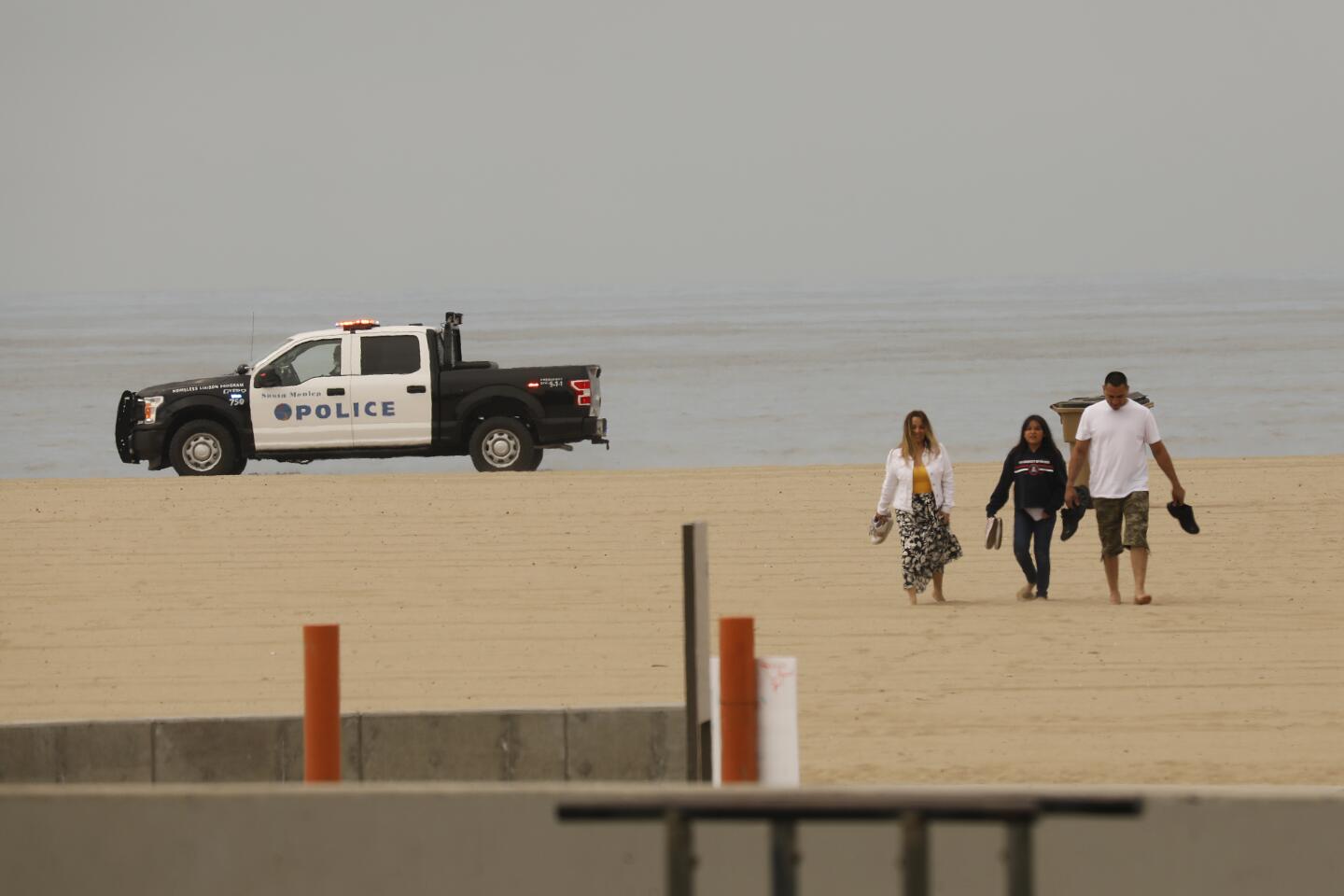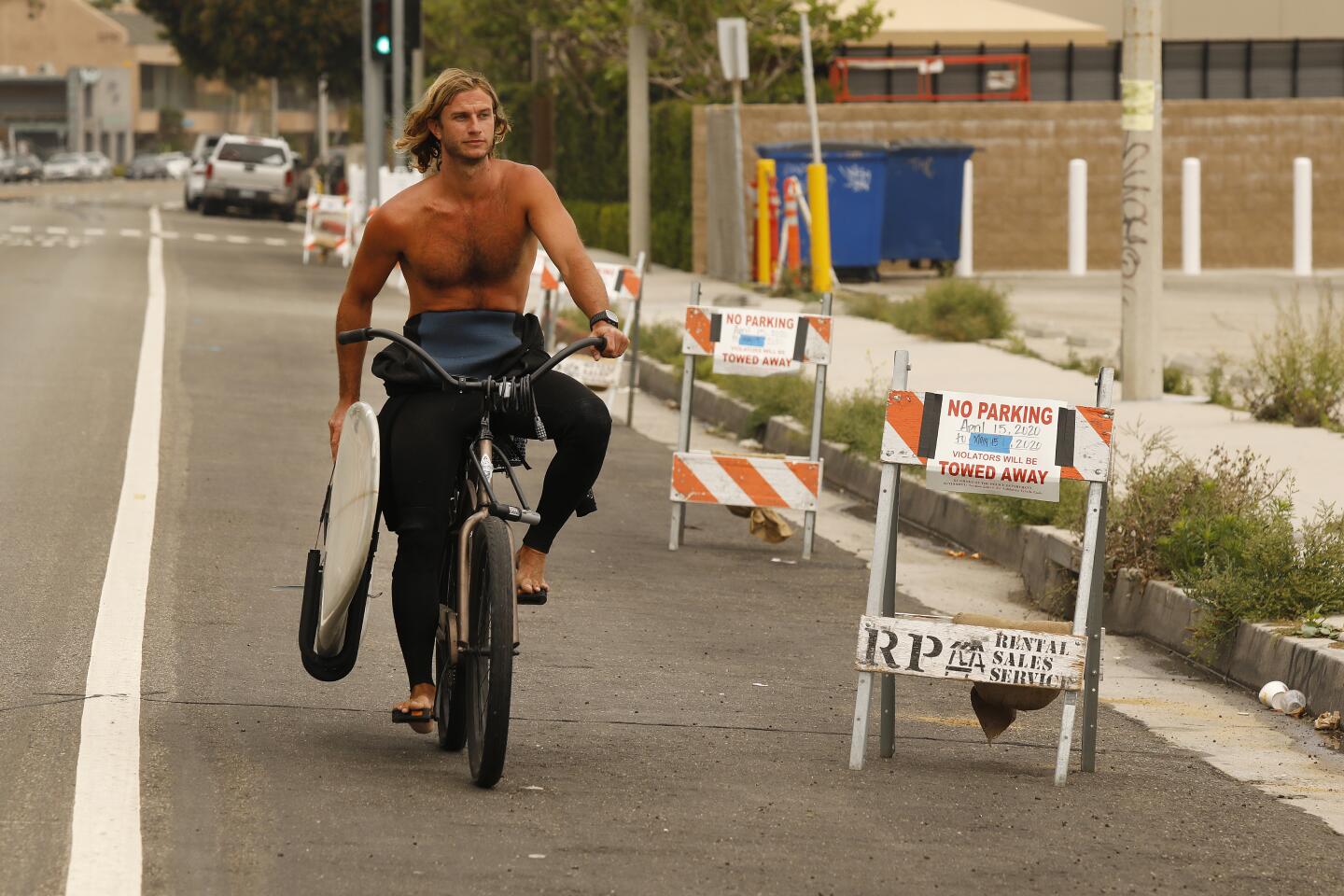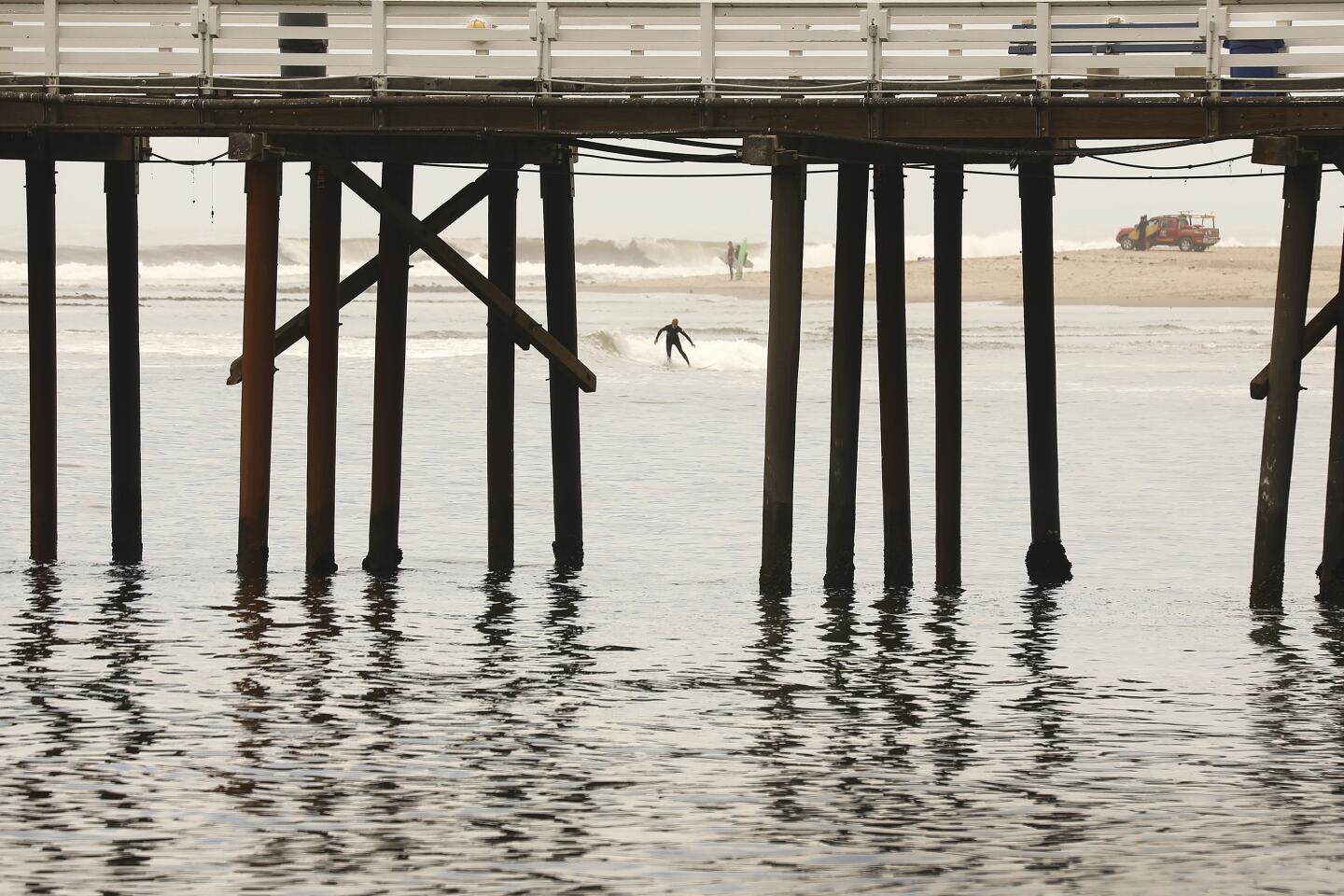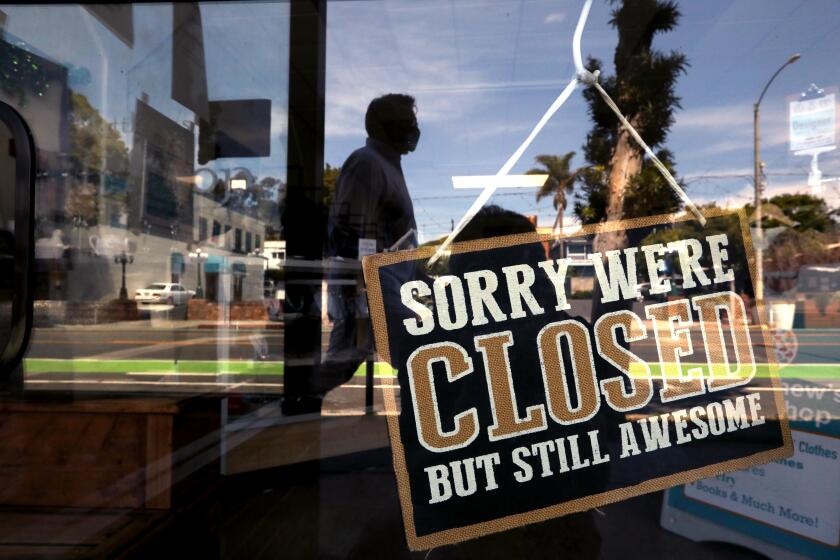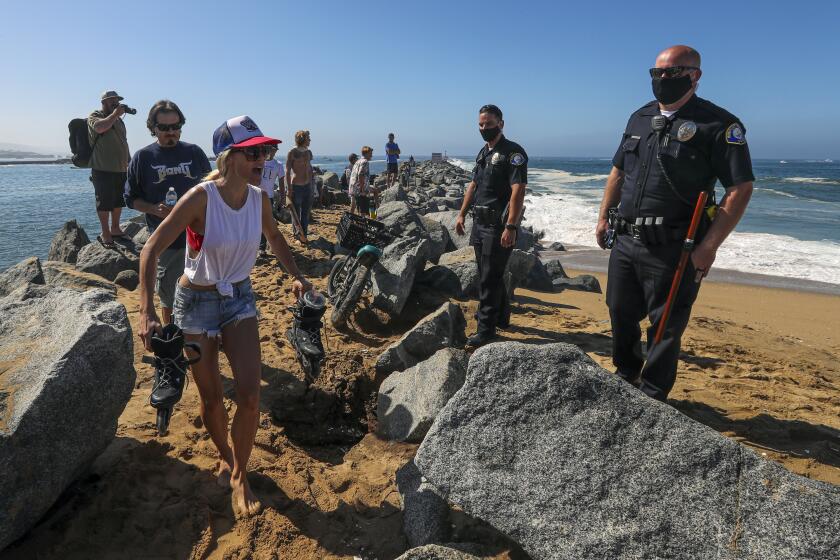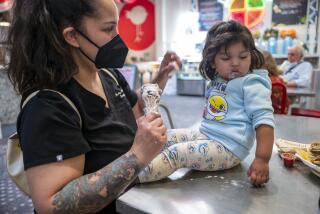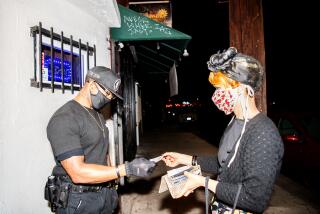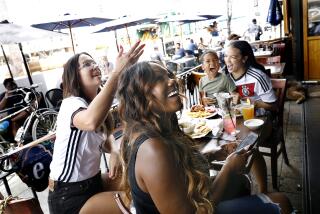L.A. mayor orders masks to be worn outdoors; county sets no end date for stay-at-home rules but eases more restrictions

- Share via
L.A. Mayor Eric Garcetti announced Wednesday evening that all Angelenos, except for small children and those with certain disabilities, would be required to wear face coverings outside, significantly tightening restrictions that required masks in businesses and on public transportation.
The masks must be worn anywhere people come into contact with others, even at a distance, he said.
“Bring your mask with you whenever you leave your home,” Garcetti said. “That will help us get more freedoms.”
The announcement comes as public health officials continue to ease restrictions in Los Angeles County, allowing the limited reopening of thousands more retail shops and manufacturing companies while extending the county’s stay-at-home order indefinitely.
Some portions of the local economy began to reopen Friday, with bookstores, clothiers, flower shops and other stores offering curbside pickup after weeks-long closures. The businesses permitted to reopen this week include thousands of retailers and manufacturing companies that supply those stores, said County Public Health Director Barbara Ferrer.
The public will not be permitted to enter these stores but can pick up items at the door. Shops in indoor malls that do not have street or parking lot-facing entrances will remain closed. Before any retailers, manufacturing or logistical businesses can reopen, however, they are required to implement and post plans for adhering to social distancing and infection control practices, Ferrer said.
Meanwhile, Ferrer extended the county’s stay-at-home order, which was implemented to slow the spread of the coronavirus and has barred gatherings and mandated physical distancing requirements. She said there is no end date to the revised health order and stressed that people should stay home as much as possible to help reduce the spread of COVID-19, which has killed more than 1,600 people in the county.
“As I’ve said from the beginning, this will be a slow journey,” Ferrer said.
Recreational facilities, including golf courses, tennis and pickleball courts, shooting and archery ranges, equestrian centers and community gardens also got the green light to reopen this week.
After a six-week closure, Los Angeles County beaches are reopening Wednesday for limited, active recreational use. Swimming is fine; sunbathing isn’t.
The loosened regulations come on the same day that beachgoers were welcomed along the sand in Los Angeles for the first time in weeks, a symbolic milestone in the county’s effort to ease stay-at-home mandates.
“Today was a great day for Los Angeles as people went back to our iconic beaches,” Garcetti said at a press briefing Wednesday evening. “This should be an exciting week, not a depressing one.”
But after a six-week closure, L.A.’s coast looks different than it did pre-pandemic. Visitors are not able to picnic, sunbathe or participate in group sports such as volleyball. Face coverings are required when not in the water, and only active recreation — surfing, running, walking and swimming — is permitted.
“Parking lots and piers and beach bike paths and concessions remain closed,” Garcetti said. “But let’s take advantage of what’s there, see those beautiful waves that have been glowing in Venice.”
The mayor also sought to soften Tuesday’s news that stringent public health orders would not be lifted for months to come.
“No, we won’t be shut down for three more months,” Garcetti said. “Our updated order doesn’t have a specific end date, not because everybody’s locked down forever, but because we still need to follow the guidance of our public health experts.”
Officials reported 1,264 new cases of coronavirus on Wednesday, bringing the region’s total number of infections to 34,428. Officials also reported 47 new fatalities, bringing the county’s death toll to 1,659. The majority of the county’s deaths — roughly 1,300 — occurred over the last month, Ferrer said.
“We are mindful that as we begin our recovery journey, we need to be sure to take care not to have a large increase in deaths and hospitalizations,” she said. “All of us will need to continue to keep each other as safe as possible.”
Health officials in Los Angeles County, which has become a coronavirus hot spot in California, indicated this week that despite the gradual reopening of public spaces, aspects of the stay-at-home order could last well into the summer.
Ferrer told the Board of Supervisors on Tuesday that she didn’t see the timeline shortening without “dramatic change to the virus and tools at hand.” She later added that, although the stay-at-home policy would likely remain, some individual restrictions would be “gradually relaxed” over the next three months under the county’s five-step plan.
But without widely available testing for COVID-19, or rapid at-home kits that would allow people to test themselves daily, it seems unlikely that the social distancing directives and stay-at-home orders will be completely eased in the region, she said.
Instead, L.A. will debut its “Slow Streets” program this weekend, temporarily shutting neighborhood streets to cars to ease pressure on crowded parks and expand safe spaces for outdoor recreation.
Mayor Garcetti also announced an expansion of the city’s emergency child-care connection, which was rolled out to help low-wage healthcare workers get their kids into local day-care centers, including 18 run by the city’s department of Recreation and Parks. Now, all emergency responders will be eligible for the program, the mayor said.
Whether camps and other youth programs will be able to open this summer remains unclear, he said.
“I do hope we can look at safe ways we can take care of our children this summer,” Garcetti said. “We’d better find them, now and in the fall, otherwise a lot of parents are not going to be able to go back to work.”
Under state guidelines, in-person dining at restaurants and the reopening of malls are poised to happen more slowly in urban centers like Los Angeles than in rural sections of the state.
Gov. Gavin Newsom said this week that California restaurants and shopping malls can reopen in counties that meet state standards for testing and reductions in coronavirus cases, but all businesses will have to abide by state guidelines for physical distancing and cleaning regimens.
Under the state plan, counties must have adequate testing and hospital capacity and the ability to trace those who have been in contact with ill people.
The vast majority of California isn’t close to meeting Gov. Gavin Newsom’s reopening requirements, a Times analysis finds.
A Times data analysis last week found most big California counties were not close to meeting Newsom’s standards. The analysis looked at which counties could pass just the first two criteria — no new deaths reported in the last 14 days and no more than one confirmed case per 10,000 residents in that same time period.
Most of California failed that test. In fact, 95% of Californians live in counties that don’t meet that standard, the Times analysis found. Not a single county in Southern California or the San Francisco Bay Area met the criteria.
The state said Wednesday that 12 of California’s 58 counties — most of them rural — will be allowed to more fully reopen.
Amador, Butte, El Dorado, Lassen, Nevada, Placer, Plumas, Sierra, Tuolumne, Yuba, Sutter and Shasta have been certified as meeting the state’s conditions for additional businesses to reopen. Colusa, Glenn, San Benito and Tehama were added Wednesday afternoon, bringing the total to 16.
“This is a dynamic process and we don’t want to delay unnecessarily based on timelines,” Newsom said Wednesday during his daily coronavirus news conference. “It’s not about timelines, it’s not about deadlines. It’s simply about data and it’s about health.”
Talks are underway with 31 other California counties to discuss whether they can expand their reopenings, the governor said, but he noted that conditions are still too serious in Los Angeles and San Francisco counties to modify guidelines for resuming business in those areas.
Officials in Orange County continue to express frustration with the state‘s more cautious approach. They contend that the economic havoc wreaked by the regulations makes it vital to loosen the rules.
As of Wednesday, Orange County had confirmed 3,749 cases and 80 deaths from COVID-19. When adjusted per 100,000 residents, the county’s documented infection rate is notably lower than that of neighboring urban counties, according to the Los Angeles Times’ coronavirus tracker.
Still, the county reached a grim milestone as officials reported that 248 people — a new daily high — were hospitalized with the virus. Nearly 100 of those individuals are being treated in intensive care units.
Los Angeles County’s stay-at-home orders will ‘with all certainty’ be extended for the next three months, Public Health Director Barbara Ferrer said.
Orange County’s observed mortality rate associated with COVID-19, roughly 2.1%, also is well below the statewide rate of about 4%. But it’s still too high for the county to be given the green light to completely reopen under state standards.
“I think it’s time to open up,” Orange County Board of Supervisors Chairwoman Michelle Steel said Tuesday. “Maybe it’s too late. It’s going to be very tough to catch up.”
Times staff writers Patrick McGreevy and Luke Money contributed to this report.
More to Read
Sign up for Essential California
The most important California stories and recommendations in your inbox every morning.
You may occasionally receive promotional content from the Los Angeles Times.
